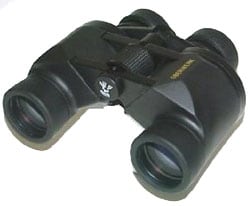

Binocular Reviews Home > Binocular Guides > Annual Binoculars Awards > Astronomy Binoculars Awards 2015
 About the Space.com Editors Choice Astronomy Binocular Awards
About the Space.com Editors Choice Astronomy Binocular Awards Space.com, one of the largest websites dedicated to space exploration, science, as well as professional and amateur astronomy.
This year they published some awards on their site listing what they thought were the best binoculars for astronomy, which I think may be of great interest to all those here on BBR:
To get to the final list, the editors of Space.com sifted through what they say was a wide range of ideal binoculars for astronomy. They acknowledged that there were many variables that they considered including price, magnification, sized, weight, field of view, prism type, optical quality, light transmission, shock resistance and water protection.
From this they got rid of the pairs they thought were "junk" and came up with a short list of selections that they feel will be ideal for most skywatchers.
Price
As with most things, if price was no object and you simply wanted the very best astronomy binoculars, they would almost always be built from the very best materials, have the highest quality optics and coatings and thus invariably cost more than what the average amateur astronomer could afford.
Thus price was a big consideration when choosing which ones were selected for an award , indeed most of their selections for the best stargazing binoculars came in at under $300 / £300. Obviously there are many astronomy bins like enormous binocular telescopes that cost upto10x or more than that, but for the average user these were not considered.
Size
The selections for the editor awards were divided into three sized categories:
Main Specifications:
Price Range
These giant 25x100 Celestron Binoculars cost about $320 in the US and £300 in the UK:
Space.com Editor's Opinion: "Don't even think about hand-holding this 156-ounce beast! The SkyMaster 25x100 is really a pair of side-by-side 100mm short-tube refractor telescopes. Factor the cost of a sturdy tripod into your purchase decision, if you want to go this big. The monster Celestron comes with a sturdy support spar for mounting. Its properly multi-coated optics will haul in surprising detail from the sky.
Just make sure your skies are dark; with this much magnification, light pollution can render your images dingy. As with many in the giant and super-giant class of binoculars, the oculars (non-removable eyepieces) focus separately, each rotating through an unusually long 450 degrees. Getting to critical focus can be challenging, but the view is worth it. You can resolve a bit of detail on face of the new moon (lit by "Earthshine") and pick out cloud bands on Jupiter; that's pretty astonishing for binoculars."
Main Specifications:
Price Range
These very large 20x80 Orion Binoculars have a price tag of around $130 in the US and £100 in the UK:
Space.com Editor's Opinion: "These big Orions distinguish themselves by price point; they're an excellent value. You could pay 10 times more for the comparably sized Steiners Military Observer 20x80 binoculars! Yes, the Orions are more delicate, a bit less bright and not quite as sharp. But they do offer amazingly high contrast; you'll catch significant detail in galaxies, comets and other "fuzzies." Unusually among such big rigs, the Astronomy 20x80 uses a center focus ring and one "diopter" (rather than independently focusing oculars); if you're graduating from smaller binoculars, which commonly use that approach, this may be a comfort. These binoculars are almost lightweight enough to hold them by hand. But don't do that, at least not for long periods. And don't drop them. They will go out of alignment if handled roughly. "
Main Specifications:
Price Range
These100mm Barska Cosmos Binoculars retail for about $230 in the US:
Space.com Editor's Opinion: "They are not pretty, but you're in the dark, right? Built around a tripod-mountable truss tube, these Barskas equilibrate to temperature quickly and give you decent viewing at rational cost. They make for a cheaper version of our Editors' Choice Celestron SkyMasters."
Main Specifications:
Price Range
With a price tag of only $220 / £ 200, these Celestron binoculars look to be a great value option:
Space.com Editor's Opinion: "A solid, chunky-feeling set of quality prisms and lenses makes these binoculars a pleasant, 38oz. handful. A medium wide 5.8 degrees filed of view and large 7mm exit pupil brings you gently into a sweet sky of bright, though perhaps not totally brilliant, stars. Fully dressed in a rubber wetsuit, these SkyMasters are waterproof. Feel free to take them boating or birding on a moist morning. Their optical tubes were blown out with dry nitrogen at the factory, then sealed. So you can expect them not to fog up, at least not from the inside. Celestron's strap-mounting points on the Skymaster 8x56 are recessed, so they don't bother your thumbs, but that location makes them hard to fasten."
 Main Features:
Main Features:
Main Specifications:
Price Range
At $150 in the US, I would consider these as a good low cost and portable astro bino:
Space.com Editor's Opinion: "Oberwerk in German means "above work." The brand does indeed perform high-level optical work, perfect for looking at objects above, as well as on the ground or water. Founder Kevin Busarow's Mariner series is not his top of the line, but it benefits greatly from engineering developed for his pricier models. The Oberwerk 8x40's treat your eyes to an extremely wide field, at very high contrast, with razor-sharp focus; they are superb for observing the broad starscapes of the Milky Way. Just 5.5 inches (14 cm) from front to back and 6.5 inches wide (16.5 cm), the Mariners are compact and rugged enough to be your favorite "grab and go binoculars." But at 37 ounces, they may be more than a small person wants to carry for a long time."
Main Specifications:
Price Range
These Celestron Comton binoculars are what I would consider very cheap: $30 - $35 in the US:
Space.com Editor's Opinion: "Yes, you read that price correctly! ($30!) These Celestron lightweight, wide-field binoculars bring honest quality at a remarkably low price point. The compromise comes in the optics, particularly the prism's glass type (you might see a little more chromatic aberration around the edges of the moon, and the exit pupil isn't a nice, round circle). Optimized for "almost infinitely distant" celestial objects, these Cometrons won't focus closer than about 30 feet (9.1 meters). But that's fine for most sports and other outdoor use. If you're gift-buying for multiple young astronomers – or you want an inexpensive second set for yourself – these binoculars could be your answer. Just maybe remind those young folks to be a little careful around water; Celestron claims only that the Cometrons are "water resistant," not waterproof. "